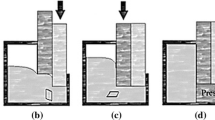Abstract
Quantitative analysis of deformation-induced textures and texture-induced mechanical properties is an important issue for optimal design and control of plastic forming of metals. Deformation-induced textures were predicted through the crystal plasticity finite-element method (CPFEM) in this study, and varying deformation modes, including uniaxial compression, uniaxial tension, simple shear, and plane-strain compression, were considered. The predicted textures were proven by experiments. Then, a theoretical model was proposed to build the quantitative relation between textures and the corresponding mechanical properties. This model takes into account the effects of grain’s orientation, grain’s interaction, and the property in the level of single grain. It captures the macroscopic anisotropy owing to textures and microscopic anisotropy owing to crystallographic structures. By applying this model, the macroscopic stress responses of grains’ aggregate with varying textures were calculated according to grain’s orientations and the intrinsic properties of the single crystal along [100] and [111] crystallographic directions. The theoretical model is proven to have high efficiency and acceptable accuracy in the prediction of texture-induced mechanical properties comparing with CPFEM model.







Similar content being viewed by others
References
Sachs G (1928) Plasticity problems in metals. Trans Faraday Soc 72:734–736
Taylor GI (1938) Plastic strain in metals. J Inst Metals 62:307–324
Ma A, Roters F, Raabe D (2004) Numerical study of textures and Lankford values for FCC polycrystals by use of a modified Taylor model. Comp Mater Sci 29:353–361
Raabe D, Zhao Z, Mao W (2002) On the dependence of in-grain subdivision and deformation texture of aluminum on grain interaction. Acta Mater 50:4379–4394
Van Houtte P, Delannary L, Kalidindi SR (2002) Comparison of two grain interaction models for polycrystal plasticity and deformation texture prediction. Int J Plast 18:359–377
Van Houtte P, Li S, Seefeldt M et al (2005) Deformation texture prediction: from the Taylor model to the advanced Lamel model. Int J Plast 21:589–624
Raabe D, Roters F (2004) Using texture components in crystal plasticity finite element simulations. Int J Plast 20:339–361
Singh RK, Singh AK, Eswara Prasad N (2000) Texture and mechanical property anisotropy in an Al–Mg–Si–Cu alloy. Mater Sci Eng A 277:114–122
Suwas S, Massion RA, Tóth LS et al (2009) Evolution of texture during equal channel angular extrusion of commercially pure aluminum: experiments and simulations. Mater Sci Eng A 520:134–146
Huppmann M, Gall S, Müller S et al (2010) Changes of the texture and the mechanical properties of the extruded Mg alloy ME21 as a function of the process parameters. Mater Sci Eng A 528:342–354
Kalidindi SR, Schoenfeld SE (2000) On the prediction of yield surfaces by the crystal plasticity models for fcc polycrystals. Mater Sci Eng A 293:120–129
Xie CL, Nakamachi E (2003) Design of texture for improved formability of high-strength steel. Mater Sci Eng A 340:130–138
Barbier D, Gey N, Allain S et al (2009) Analysis of the tensile behavior of a TWIP steel based on the texture and microstructure evolutions. Mater Sci Eng A 500:196–206
Zhou Y, Neale KW, Tóth LS (1993) A modified model for simulating latent hardening during the plastic deformation of rate-dependent FCC polycrystals. Int J Plast 9:961–978
Li HW, Yang H (2012) An efficient parallel-operational explicit algorithm for Taylor-type model of rate dependent crystal plasticity. Comp Mater Sci 54:255–265
Kalidindi SR, Bronkhorst CA, Anand L (1992) Crystallographic texture evolution in bulk deformation processing of FCC metals. J Mech Phys Solids 40:537–569
Bronkhorst CA, Kalidindi SR, Anand L (1992) Polycrystalline plasticity and the evolution of crystallographic texture in FCC metals. Philos Trans R Soc Lond A 341:443–477
Mao WM, Yang P, Chen L (2008) Principle of texture analysis and its measurement technology (in Chinese). Metallurgical Industry Press, Beijing
Acknowledgments
This study was supported by the National Natural Science Foundation of China (51175428), the National Basic Research Program of China (2011CB012802), and the 111 Project (B08040).
Author information
Authors and Affiliations
Corresponding author
About this article
Cite this article
Li, H., Chen, S. & Yang, H. A new quantitative relation between deformation textures and corresponding mechanical properties of FCC metals. Chin. Sci. Bull. 59, 1049–1056 (2014). https://doi.org/10.1007/s11434-014-0134-8
Received:
Accepted:
Published:
Issue Date:
DOI: https://doi.org/10.1007/s11434-014-0134-8




